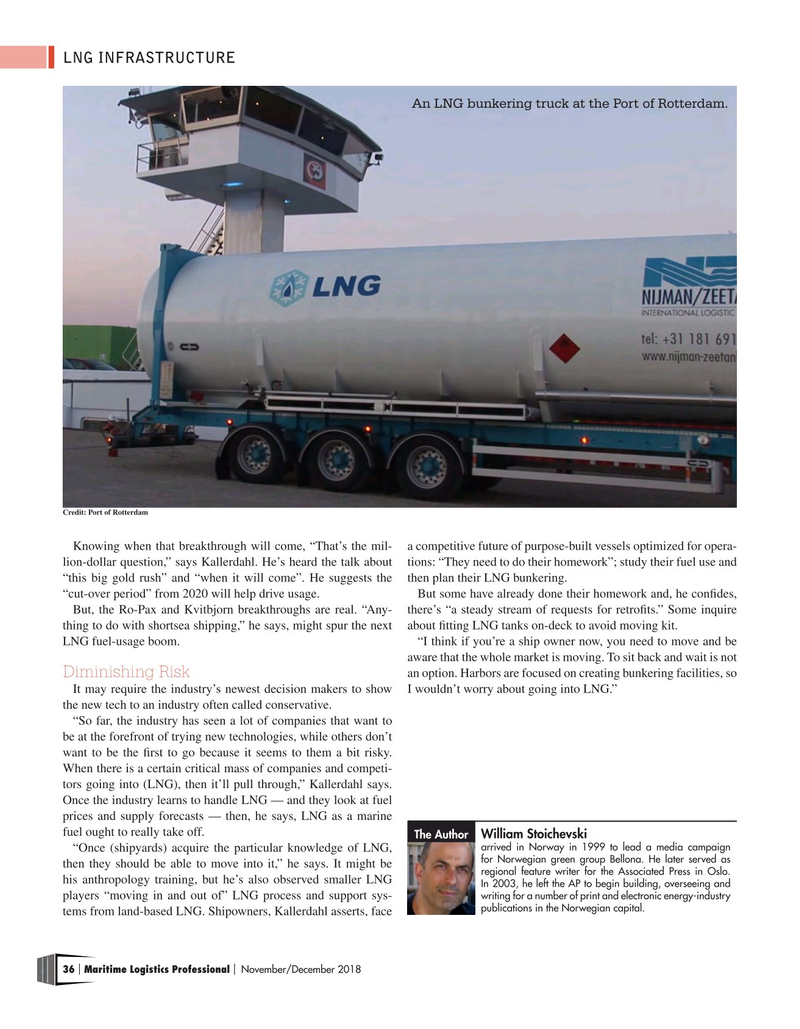
Page 36: of Maritime Logistics Professional Magazine (Nov/Dec 2018)
Regulatory & Environmental Review
Read this page in Pdf, Flash or Html5 edition of Nov/Dec 2018 Maritime Logistics Professional Magazine
LNG INFRASTRUCTURE
An LNG bunkering truck at the Port of Rotterdam.
Credit: Port of Rotterdam
Knowing when that breakthrough will come, “That’s the mil- a competitive future of purpose-built vessels optimized for opera- lion-dollar question,” says Kallerdahl. He’s heard the talk about tions: “They need to do their homework”; study their fuel use and “this big gold rush” and “when it will come”. He suggests the then plan their LNG bunkering. “cut-over period” from 2020 will help drive usage. But some have already done their homework and, he confdes,
But, the Ro-Pax and Kvitbjorn breakthroughs are real. “Any- there’s “a steady stream of requests for retrofts.” Some inquire thing to do with shortsea shipping,” he says, might spur the next about ftting LNG tanks on-deck to avoid moving kit.
LNG fuel-usage boom. “I think if you’re a ship owner now, you need to move and be aware that the whole market is moving. To sit back and wait is not
Diminishing Risk an option. Harbors are focused on creating bunkering facilities, so
It may require the industry’s newest decision makers to show I wouldn’t worry about going into LNG.” the new tech to an industry often called conservative. “So far, the industry has seen a lot of companies that want to be at the forefront of trying new technologies, while others don’t want to be the frst to go because it seems to them a bit risky.
When there is a certain critical mass of companies and competi- tors going into (LNG), then it’ll pull through,” Kallerdahl says.
Once the industry learns to handle LNG — and they look at fuel prices and supply forecasts — then, he says, LNG as a marine fuel ought to really take off.
William Stoichevski
The Author arrived in Norway in 1999 to lead a media campaign “Once (shipyards) acquire the particular knowledge of LNG, for Norwegian green group Bellona. He later served as then they should be able to move into it,” he says. It might be regional feature writer for the Associated Press in Oslo. his anthropology training, but he’s also observed smaller LNG
In 2003, he left the AP to begin building, overseeing and writing for a number of print and electronic energy-industry players “moving in and out of” LNG process and support sys- publications in the Norwegian capital. tems from land-based LNG. Shipowners, Kallerdahl asserts, face 36 Maritime Logistics Professional November/December 2018 | |

 35
35

 37
37
